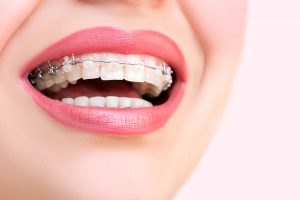Give the Gift of a Straight Smile!
Protect Your Teeth from the Holiday Sugar Onslaught!
December 20, 2017Top 7 Reasons to Try Laser Dentistry
January 5, 2018
Straight teeth achieved through orthodontics can give your child a gift that keeps on giving throughout their lives. This holiday season, consider what a straight smile can do to keep your child smiling from ear to ear. Advances in orthodontics and modern technology offer invisible braces or braces that pop with color! There is something for everyone! Children aren’t the only ones that benefit from the gift of braces. Adults are reaping benefits too! Learn how you can transform your smile and your overall health through orthodontic treatment.
Child Orthodontics
When people think of braces, they tend to picture teenagers, but adults and children also make up a large percentage of braces wearers. However, did you know that about 1/4th of all people that wear braces are children? Children receive braces at a young age to correct orthodontic issues that can become severe later on in life. The American Association of Orthodontists recommends that your child should have their first orthodontic appointment by age 7. This is a time when we can detect bite and alignment issues and correct them before the jaw grows and becomes harder. Orthodontic treatment is much easier on children as their jaws are still growing.
With child orthodontics, we can not only help children to have a straight smile later on in life, but we can make sure that their mouth has enough room for all of their adult teeth. If a bite problem (overbite, underbite, crossbite, etc.) is present, we can correct it when young. If not treated early-on, bite and alignment problems can cause speech impediments and can hinder a child’s ability to talk, eat, bite or chew correctly. These problems can hinder their progress in school and with their health. Generally, we perform child orthodontics around age 7 or 8 to correct bite and alignment. Later on (around ages 11 or 12), we provide a child with braces once more so that they can have a straight smile once their permanent teeth come in.

Can Children Benefit from a Straight Smile?
There have been many studies about straight teeth and if it affects a person’s life. Many studies (such as those conducted by Invisalign and The New York Times), have found that a straight smile can increase a person’s confidence immensely. In a study by Invisalign, they found that those who had a straight smile felt 60% happier, more attractive and more successful. They were also perceived by others as having those same qualities. A better smile has also been shown to get people ahead professionally and socially. In studies, those who have a straight smile have a better chance at landing a job over someone who doesn’t have one.
Not only are straight smiles beneficial for adults, but they are beneficial for children and teenagers as well. Confidence directly correlates to success in school, home life and professional life. Children benefit from that confidence as well. School is a time of growing and learning for children. When they feel better about their appearance, they feel more confident. When they are more confident, they get better grades, make friends easier and achieve more.
Orthodontic Options for You
There are various orthodontic options available to patients. It may be no surprise to you that traditional metal braces are the most popular braces option for children. Traditional metal braces have been around for decades and they work amazingly well for getting those pearly whites straight. We love this option for all patients, as it works well and is quite economical compared to other choices. Children can achieve a straight smile primarily through metal braces or ceramic braces.
Metal braces consist of metal brackets that are cemented to the center of each individual tooth. This is the most popular option amongst all of our patients. The brackets we use have an archwire that connects all of them together. This is what we tighten each time your child comes in for their visit. Over time, that tightening of the archwire and bracket is what moves the teeth into that straight smile your child wants.

Clear, Ceramic Braces
We also offer Clarity ADVANCED Ceramic Braces by 3M at our office. Clear braces are great for children or teens alike that want braces, but don’t want them to be as noticeable as metal brackets are. Ceramic brackets are white already, so they will blend in with the teeth better. However, we believe that braces can and should be fun. That’s why most of our child patients couple their clear braces with colorful bands that stand out. These bands are placed around each bracket that is cemented to the teeth. Children can choose the same color for all their brackets, or they can have a rainbow of colors. Choosing the colors for their smile is one of children’s favorite parts of braces. Plus, the ceramic material of these kinds of braces will decrease the risk of demineralization from bonding agents and brackets.
A Straight Smile for Your Child
Adults and children alike can benefit from a straight smile. Not only will a straighter smile increase confidence, but it can make a person more successful. If you want to know more about child orthodontics or braces for yourself, contact Hardy Pediatric Dentistry & Orthodontics today at (720) 887-6003!